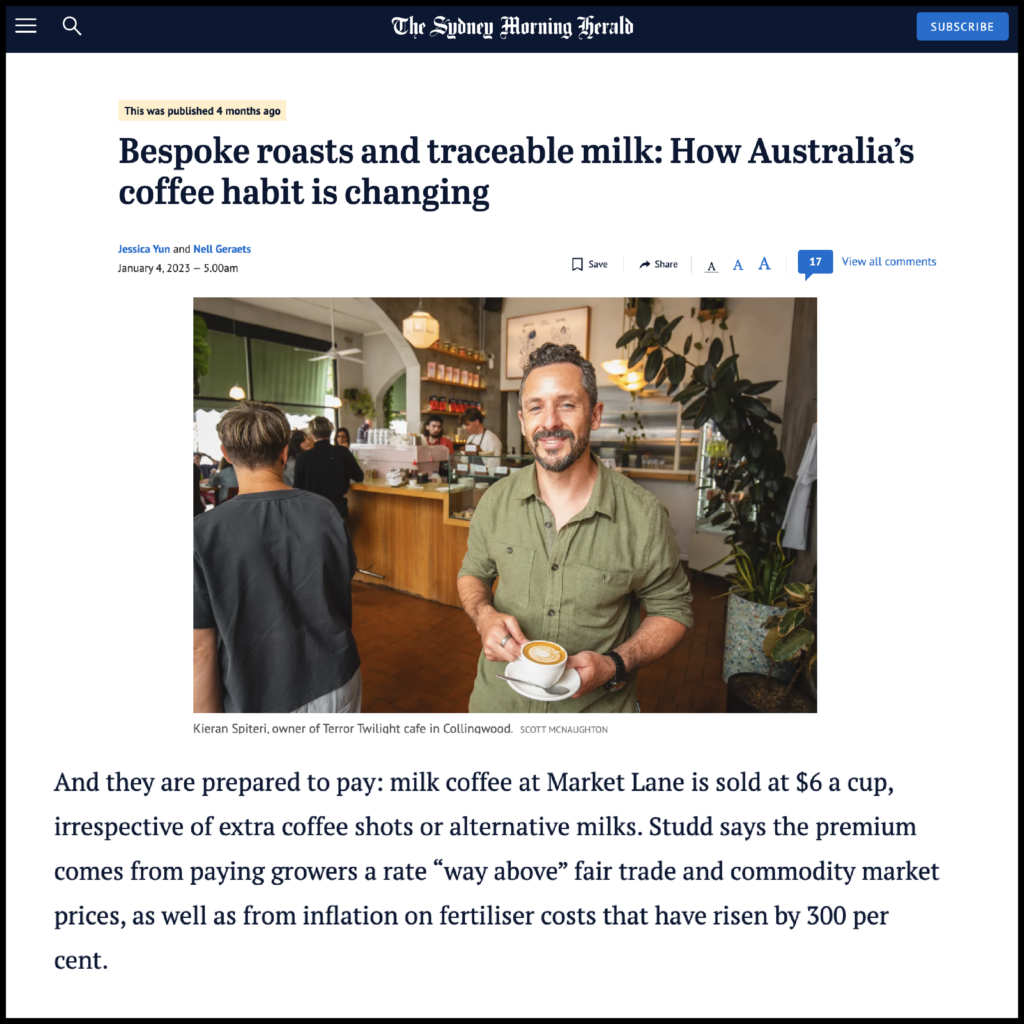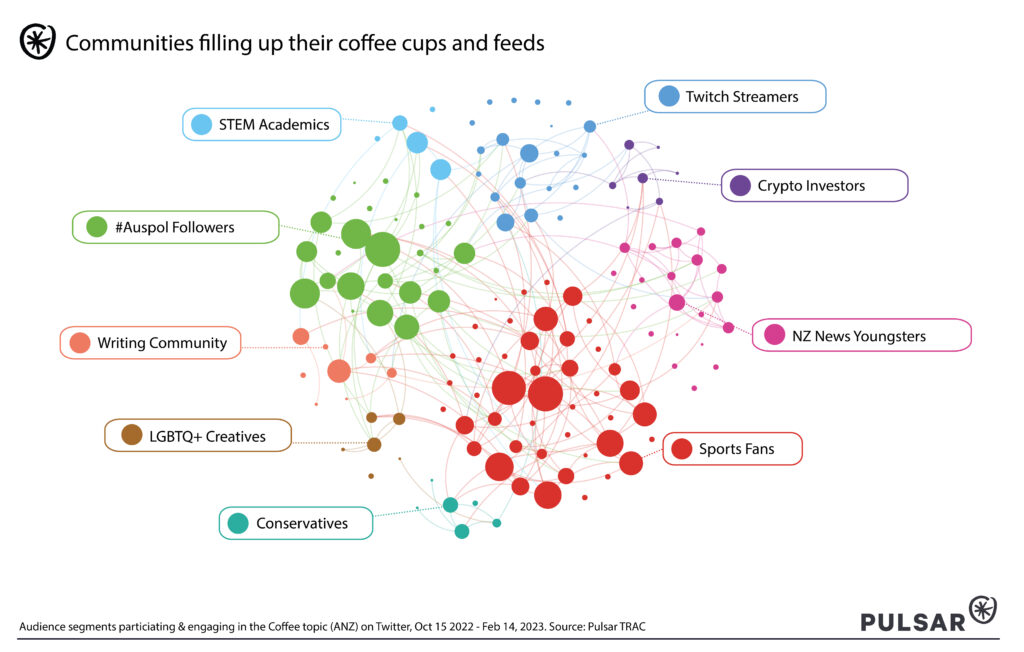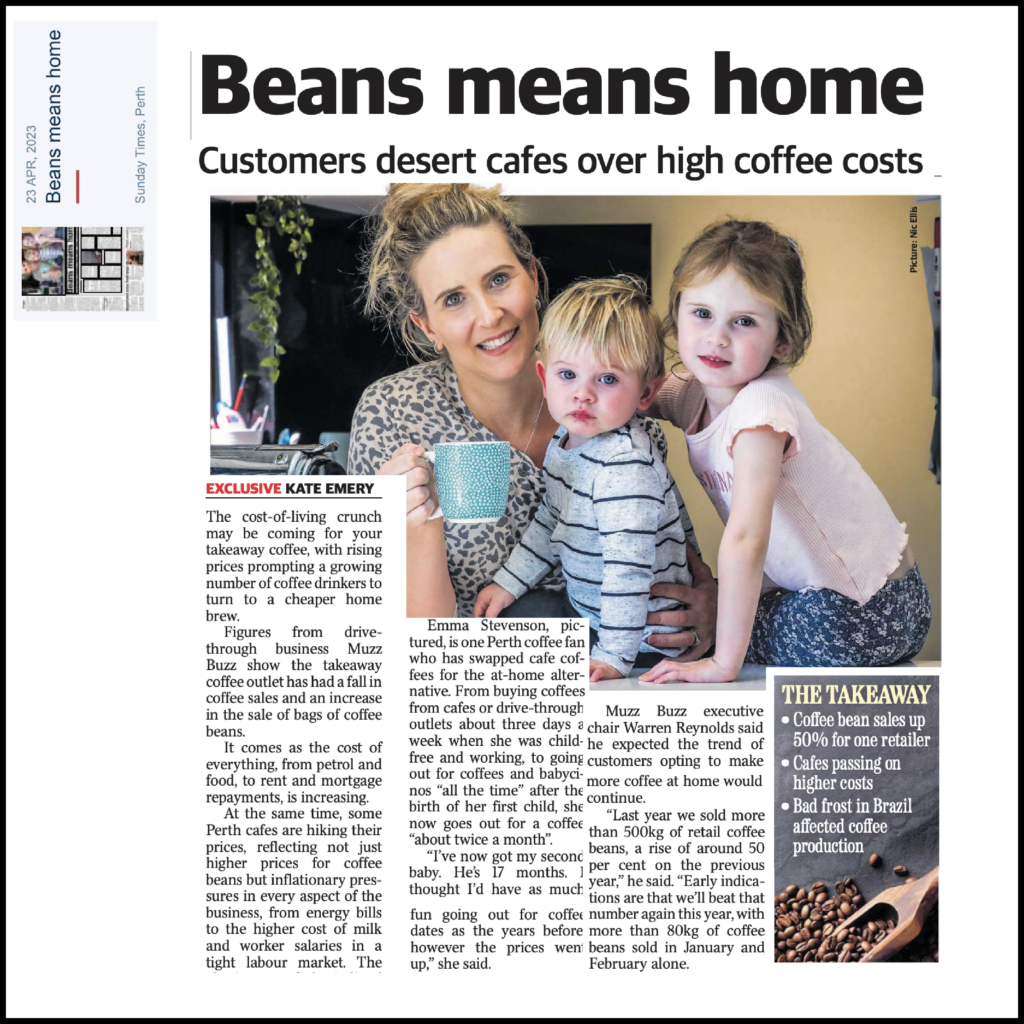Blog
The fundamentals of stakeholder strategy
A practical guide to tailored stakeholder management, offering strategies and tools to identify, map, and nurture relationships.
It’s no secret that Australians and New Zealanders take their coffee seriously. Coffee has a rich history spans from ancient Ethiopia to modern European coffee houses, and its impact is felt worldwide. Coffee has become an essential part of daily life, and recent events such as the cost of living crisis and climate change have forced consumers to investigate and adapt to bringing the barista experience into their homes. But some people claim the improvement this would have on finances is inflammatory. But how are these new buyer trends playing in media discourse?
As a result, coffee brands are becoming more creative with their brand stories and product knowledge, while innovators in the industry are identifying gaps in the market that align with public values. Using audience intelligence data provided by Pulsar and Isentia media research, we can measure how audiences impact the coffee industry
– coffee up!

But what makes a good coffee? The taste and flavour of coffee beans are influenced not only by their country of origin and geographical attributes but also by larger factors such as climate change and human rights issues. While Australians and New Zealanders value sustainable coffee, the rising cost of a cup of coffee at cafes, which can now exceed $5, is leaving a bad taste in consumers’ mouths. It’s unclear whether this price increase benefits farmers or labourers. However, coffee shops that invest in sustainable and ethical coffee products are attracting consumers. For instance, Market Lane, a coffee institution based in Melbourne, is setting an example of fair pay for coffee growers by increasing their prices.
Coffee taste is a subjective matter. However, the sustainability of coffee production can be measured objectively through comprehensive facts and statistics. The incorporation of people’s distinct preferences and interests into their perception of coffee can help us develop effective marketing and communication strategies through digital conversations.

Audiences groups hooked on jitter juice usually require its benefits of keeping them awake. That’s the case for Twitch Streamers gaming and streaming into the early morning hours. The writing community also reaps the rewards of the extra kicks it provides, but writing has long been associated with coffee houses and the initiation of philosophical or revolutionary ideas. Sports fans (the biggest audience group) and NZ News Youngsters might seem a more surprising group to be on coffee’s radar. But the sporting culture is strong in ANZ regions and matches demand that these fans stay up to watch games live domestically and internationally.
A caffeine boost isn’t the only reason these communities drink coffee. Each community engaging in the coffee conversation is finding a need to stay alert; while this isn’t heralded as a health benefit, the social advantages of having a cup of coffee are often overlooked. #Auspol Followers, while invested in politics and political campaigning, like #votesyes, unironically use popular slang in their content. NZ Youngsters, with their shared affinity for using self-improvement and educational apps like Duolingo and Headspace and their following of young left-leaning politicians like Chloe Swarbrick, are learning how to enrich their lives to foster a better future for their generation; by exchanging ideas with like-minded people over a coffee.
But going to a cafe isn’t the healthiest of rituals for the hip pocket. The Sports Fan community doesn’t embrace the pretentious side of coffee. Being an analytical bunch, they share an appreciation for business and tech news. This group’s tastes, like their favourite team’s gameplay, are driven by efficiency.
The way people consume and perceive coffee is evolving. Price and sustainability are the primary considerations for buyer trends in these regions, but how does the media’s portrayal of the coffee industry in these countries fit into the picture? News media has made stronger ties to the cost of living and coffee consumption over sustainability. With inflation rapidly rising, it’s no wonder this connection is made. Many feel that investing in a professional-grade coffee machine and brewing their own coffee at home is a cost-effective solution that’s promoted in the media. However, interest rates are rising and the media suggests that the future quality of life for both families and individuals, including from the Gen-Z generation, will depend on adapting everyday rituals.

But Millennials and Gen-Zers get chastised for their “reckless” spending habits on daily overpriced lattes and smashed avo toast, so inflation cannot be ignored. Retailers are noticing the uptake of coffee bean purchases in buyer trends. Online barista novices and gurus are all sharing tips and tricks on how to get the perfect cup of coffee with the tools on hand, quality beans and compatible milk variety at a low cost. As people attempt to save by mimicking a barista-style coffee at home, they’re also trying to discover alternatives in familiar brands and products that better fit their wallet, like the Cole’s Express’s $2.50 iced latte.
The beans favoured by Aussies and Kiwis’ taste buds and wallets are Woolworths and Coles brands, but not far behind is Lazzio, an Aldi-owned brand, where shoppers are making even more savings, and Nespresso. Nespresso’s compact and convenient products are an ideal alternative to cafe-style machines, and the brand utilises sustainability marketing initiatives. But big supermarkets like Coles are making an even more significant impact on buyer trends by providing a reason for them to spend more and stay longer like Coles Express’ cafes enabling consumers to drink coffee under the guise of doing their regular grocery shop.

Well-known brands not only catch the attention of consumers but also their competitors. The way a brand packages its products is an important aspect of its personality. Recently, Moccona’s legal action against Vittoria has caused controversy in the industry and with the public. Some people have even suggested boycotting Moccona, an international brand.
So what does this mean for future coffee consumption and buyer trends? The coffee community is influenced by the broader macro trends impacting society, whether sustainability or cost of living. But the future is ethically and socially conscious, and daily routines are getting a similar makeover. In 3 years, don’t be surprised if a cell-grown coffee is served to you in a cup made from recycled dehydrated coffee grounds or made available for purchase in supermarkets. How much would you pay for that though?
Understanding the big-picture narrative requires a comprehensive view of the news and social media landscape. The integration of using Isentia and Pulsar platforms allows us to democratise audience intelligence enabling organisations of all sizes to access and leverage data-driven insights for informed decision-making and achieving their goals.
Loren is an experienced marketing professional who translates data and insights using Isentia solutions into trends and research, bringing clients closer to the benefits of audience intelligence. Loren thrives on introducing the groundbreaking ways in which data and insights can help a brand or organisation, enabling them to exceed their strategic objectives and goals.
A practical guide to tailored stakeholder management, offering strategies and tools to identify, map, and nurture relationships.
Explore how journalism shapes trust, audience engagement, and media influence in Australia and New Zealand.
Get in touch or request a demo.